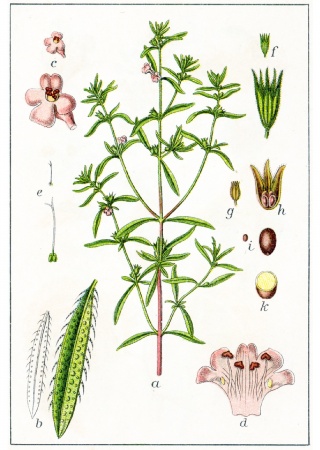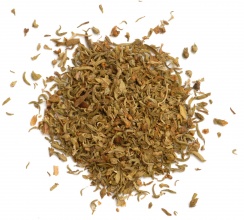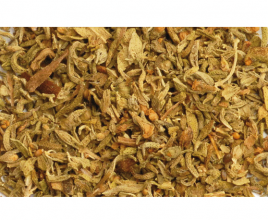Savory
- …savory can be used as a substitute for pepper?
- …savory should be a part of every meal that includes legumes, since it contains substances effective against flatulence?
- …pouches of dried savory in the closet are an effective moth repellent?
- …the most delicate flavor and aroma comes from the topmost young leaves, which are often an ingredient in salads?
- …savory allows reduction of salt in foods, without sacrificing taste?
- …Egyptians included savory in love potions and even today is included in mixed cocktails?
- …savory as a spice is the fresh or dried leaves of the herb Satureja hortensis?
Chicken thighs with savory
4 chicken thighs
1 tablespoon tomato paste
1 teaspoon savory
1 garlic cloves
1 teaspoon Worcestershire sauce
1 teaspoon soy sauce
2 tablespoons oil, salt
Thoroughly mix all ingredients together with chicken thighs, separated at the joint (making 8 pieces). Allow to marinate for several hours. Salt to taste and grill. Serve with white bread, rice or fries and salad.
In the 3rd century, savory was a spice used by Roman gourmets, but also a medicinal herb. Strong aphrodisiac properties were attributed to it and during the Middle Ages it was as an aid in fulfilling marital obligations. Romans used vinegar and savory to prepare a concoction similar to today's mint sauce. A pouch of dried savory worn around the neck was reputed to enhance thinking. Savory was among the herbs carried by settlers bound for America. In the 16th century, the doctor Peter Mattioli wrote, "Savory gives foods a delightful and tasty sharpness, strengthens digestion, reduces bloating and abets bodily vigor."



